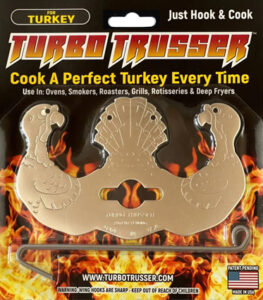With news about major retailers closing their stores, we hear a lot of buzz about online sales and the intense pressure on retail.
On one hand, e-commerce comprises a mere 9.8% of total sales. Brick and mortar stores like Target and Home Depot are crushing expectations with in-store sales. On the other hand, the e-commerce portion of total sales has been growing an average of 10% every year for the past five years. The ratio of e-commerce sales is projected to grow to 12.4% in 2020.
Some of the current pains for e-commerce merchants and consumers are not new, but they are certainly more apparent as e-commerce grows. For example, Anton Cotaj, owner of ANAMA Package and Container Testing, says “It was determined that an average package is being dropped 17 times.”
 |
| [Source: Ace Ventura/MakeAGif.com] |
Most drop testing includes dropping a box on at least six corners or edges. Official ITSA testing protocols can be performed by UPS, FedEx, or packaging labs may include additional drops, vibration, or changes in pressure as part of their standards.
As Sara Shumpert Dunn points out in her e-commerce packaging blog, the distribution chain for brick and mortar is vastly different than e-commerce. For brick and mortar retail, a brand ships from manufacturer through a distribution center to a local store. E-Commerce shipping triples the complexity of travel, and adds opportunities to drop your product by layering in additional distribution centers, handling for shipping with other products, and local shipping to your consumer’s home.
In order to protect products, e-commerce shipping often includes superfluous padding, incredibly large boxes, or pricey repackaging. To overcome what has become a huge [shipping] packaging waste problem, Amazon has implemented many new programs. If your product is part of a small shipment, yours may be not be shipped in a box at all – It might be in an envelope.
What are the Options?
As e-commerce continues to grow, packaged goods brands optimize their business practices, and packaging is a key consideration. Ships in Own Container (SIOC) is a good option for some products, especially if graphics and branding are not an important part of your packaging strategy.
Otherwise, for packaged goods in many categories (e.g. health & beauty, housewares, office/school, sporting goods, toys, pet, automotive aftermarket, electronics, hardware, or hobby), SIOC is not a reasonable solution. Ultimately, there are three choices:
- Produce two styles of packaging: Produce one package to market your product in the retail environment and one for e-commerce. Taking this path is a viable solution for some, but splitting packaging styles reduces volume and will probably increase individual package costs.
- Continue using the same packaging for both retail and e-commerce and absorb risks from additional handling by e-commerce packing and shipping.
- Consider small tweaks for an all-in-one solution. Incorporate small tweaks to provide protection and security while preserving (or improving) brand integrity.
A Well-Designed Approach
Rohrer designs and manufactures thermoformed, rigid plastic, and paperboard packaging. I spoke with packaging designers who specialize in all of these packaging styles to ask for guidance. How can retail-ready packaging provide protection and security for e-commerce shipping?
Jenna Slanker is a Structural Designer who specializes in fabricated boxes and custom designs.
When it comes to rigid packaging and fabricated boxes, if you want your package to be more protective, I would add more “padding,” as opposed to just fitting it tight to the product. For example, I just designed something for a video game. They asked for the box to fit perfectly to the game. It’s going to protect against scratches and things like that, but it won’t protect the game if it gets dropped.
There are several ways we can make small adjustments to add protection to retail packaging. We could add panels, inserts, or spacers to provide some air for protection. We can do a pillow pack. Or we can even create a thermoformed mold to keep the product away from any point of impact. When the product is allowed to move a little bit in the package, that’s where the protection is. When it’s not able to move, it’s going to take the impact.
Todd Jongewaard is Packaging Designer at Rohrer’s Addison Facility.
If a customer has multiple pieces in the product that are completely separate of each other, they can use paperboard to make trays, inner partitions, or cells. This helps keep products organized for retail packaging and e-commerce, and it helps prevent damage to the product inside.
We had a customer who sold pool chemicals. We designed an inner partition to separate the activator and the actual chemicals that will go into the pool to test pH. This helped ensure the chemicals wouldn’t bump into each other during shipping to stores or homes!
Another customer sells flash cards and teaching booklets for kids. They use their product container for retail as well as SIOC. Their books and cards are different sizes, and they don’t want them to collide and get scratched inside the package. So what we did for them – and they really liked this – was to create an outer box with a containment tray insert to hold the booklets in place. There was also a small window which stabilized and held the flashcards in place. The customer added graphics to the tray and used it for additional marketing.
Ryan Carter is a Packaging Designer for blister packaging and ezCombo℠.
If you’re creating blister packaging for the retail shelf as well as for e-commerce, we can minimize the draw so there are less areas to crack; or when we have a heavy product, we’ll extend the flange to the edge of the card and we can add a rail around the edge of the card to add insulation. We have also added a rib around the product to help protect against any impact. We’ve developed a lot of solutions over the years – especially after we went through a rigorous process with a large customer who wanted us to run all of our drop tests from 60 inches!
In most cases, we want to design the blister so that it’s tight to the product. The more rattling, the more chance the product can move around and break through. Even a tiny movement can turn into something big when it moves for hours on end on the back of the truck.
***
All of the designers remind brand owners: Don’t skimp on materials. Heavy products require a thicker gauge. The flange on blisters and the glue area on rigid windows need to be wide enough to create a nice tight seal! Rohrer package designers will work with you to strike the right balance of branding and product protection.



